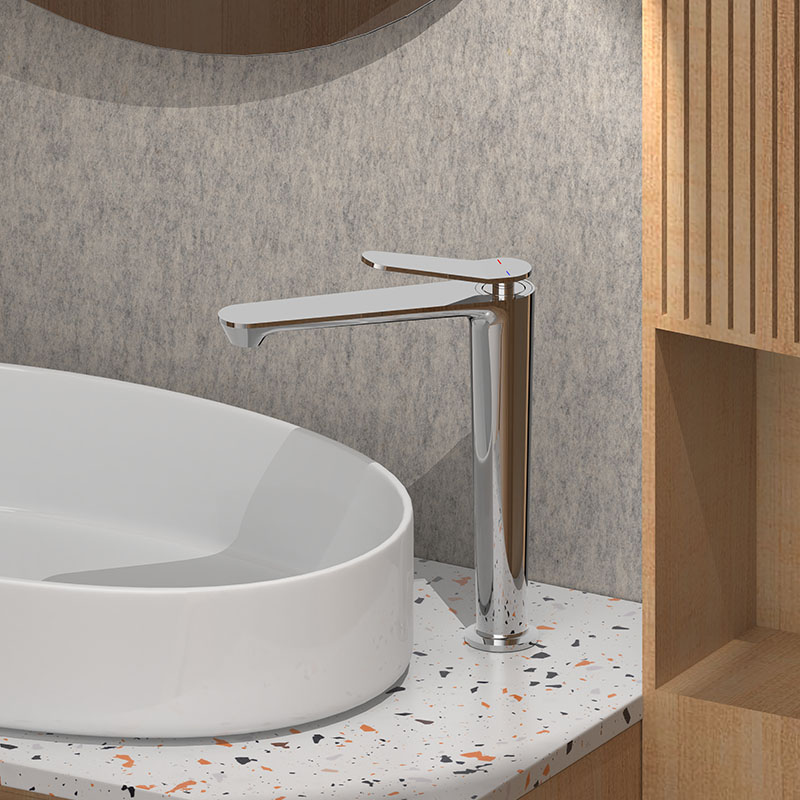Standardization And Process Improvement Path for Bathroom Product Quality Control
Driven by consumption upgrades and global competition, the bathroom industry is facing a transformation from "scale expansion" to "quality first". The stability of product quality and the advancement of process level directly determine the company's market reputation and premium ability.
1. Standardization system: the cornerstone of quality control
Full-chain control of material standards
Heavy metal precipitation limit: US NSF/ANSI 61 requires that the lead content of drinking water contact parts is ≤0.25%;
Corrosion resistance test: Salt spray test must reach 480 hours without rust.
A leading brand has introduced lead-free copper alloys, reducing lead precipitation to 0.01%, passing the strict certification of the European and American markets, and increasing the premium rate by 20%.
Standardized operation of production process
Digitalization of process parameters: Ceramic firing must strictly follow the temperature curve, and the temperature control accuracy of the kiln is improved from manual ±15℃ to AI control ±2℃;
Key process SOP: The laser drilling process of the shower outlet requires the aperture error ≤0.05mm, and the first piece of each batch must be inspected, and the defective rate is reduced from 5% to 0.3%.
Global collaboration of testing and certification
International mutual recognition system: Products certified by CE, WaterMark, etc. can enter the EU and Australian markets without inspection;
Enterprise internal control standard upgrade: A company sets the internal control standard of toilet flushing performance to 1.5 times the national standard), ensuring that the market complaint rate is less than 0.5%.

2. Process improvement path: technological innovation drives quality transition
Precision manufacturing technology breakthrough
Micron-level processing accuracy: The five-axis linkage CNC machine tool is used to process the faucet valve core, with a surface roughness Ra≤0.4μm and a 50% increase in sealing;
Low-temperature fast-firing ceramic process: The blank with nano-zirconia can be fired at 1150℃, with energy consumption reduced by 30% and a flexural strength of 45MPa.
Intelligent production system
AI visual quality inspection: 3D line scan camera detects toilet glaze, identifies 0.1mm level defects, and the missed detection rate is less than 0.01%, replacing 90% of manual quality inspection posts;
Digital twin optimization process: Construct a virtual model of the kiln to simulate the influence of different heating curves on the stress distribution of the ceramic body, and the firing qualification rate is increased from 85% to 98%.
Green process innovation
Cyanide-free electroplating technology: Trivalent chromium plating solution is used to replace highly toxic hexavalent chromium, the wastewater treatment cost is reduced by 70%, and the heavy metal emission compliance rate is 100%;
Dry glazing process: Through electrostatic spraying, the glaze utilization rate is increased from 65% to 95%, and dust pollution is reduced by 80%.
3. Digital empowerment: full life cycle quality management
Internet of Things (IoT) real-time monitoring
Deploy 5000+ sensors on the production line to collect equipment vibration, temperature, and pressure data in real time, and the cloud AI model warns of potential faults. After a certain enterprise applied it, the unplanned downtime of equipment was reduced by 40%, and the product consistency (Cpk) increased from 1.0 to 1.67.
Blockchain traceability enhances trust
Generate a unique digital ID for each product, record the raw material batch, process parameters and test report. Consumers can scan the code to verify the authenticity, and the counterfeit rate of a certain brand has dropped by 60%, and the customer repurchase rate has increased by 25%.
Big data drives continuous improvement
Analyze 100,000+ user complaint data, locate high-frequency problems (such as faucet leakage accounts for 35%), and reversely optimize the valve core structure. A certain enterprise reduced the leakage complaint rate by 80% by improving the inclination of the sealing ring (from 45° to 60°).
4. Challenges and future breakthroughs
Standardization dilemma of small and medium-sized enterprises
Countermeasures: Industry associations take the lead in formulating group standards, sharing testing resources, and reducing certification costs.
Input-output ratio of process upgrades
Countermeasures: The government provides technical transformation subsidies to guide enterprises to transform in stages.
Future direction of technology integration
Quantum sensing technology: monitor ceramic microcracks with nanometer-level precision and warn of structural failure in advance;
Application of self-healing materials: Bionic materials can automatically repair the glaze after scratches, extending the lifespan by 3 times.


